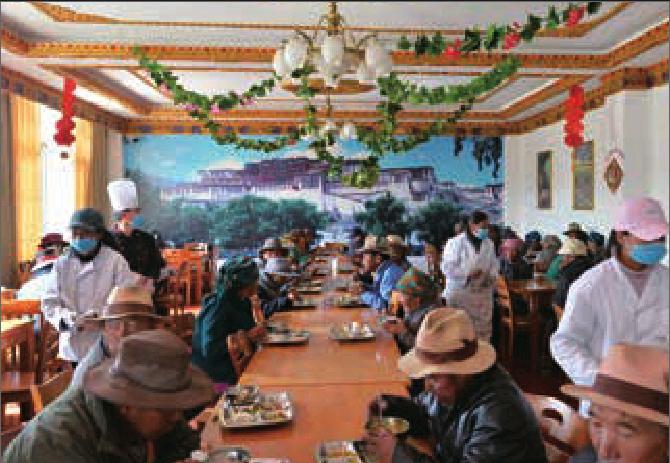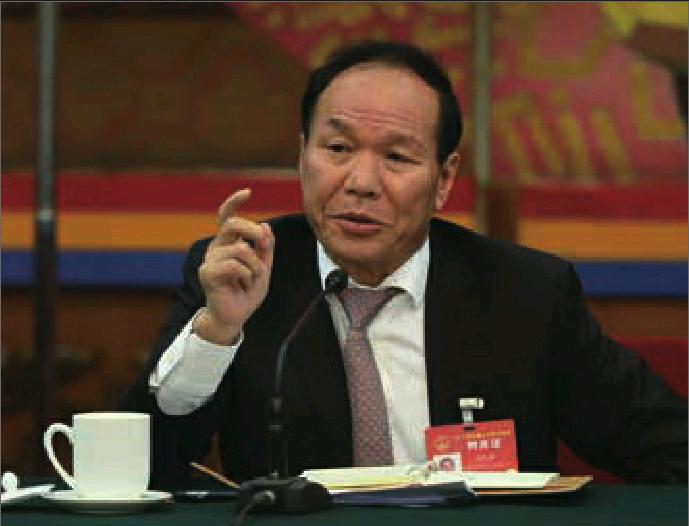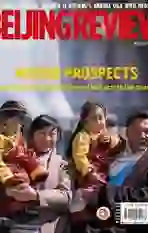A BALANCED EFFORT
2017-04-13



Beijing Review: What has been the progress in targeted poverty alleviation efforts in Tibet?
Qizhala: In 2016, the poverty alleviation programs were based on developing competitive industries, relocating people living in inhospitable areas, and improving education in accordance with the Central Governments strategy. Compensating those affected by ecological conservation efforts and guaranteeing basic living standards for people unable to work were also factored in.
We saw to it that precise aid targets were identified, locally specific programs were adopted and the use of funds was optimized.
We also shored up weak links. Apart from strengthening leadership, improving supporting measures, increasing investment and implementing a responsibility system, we focused on developing competitive indus- tries since they are essential to addressing poverty. We dont rely solely on favorable state policies and financial support in the anti-poverty drive.
Let me give you an example. There is a beautiful village along the Lhasa River called Sanyou, or the Three Haves. It means villagers here possess three important things: a house, industry and health. The village, a settlement for people relocated from impoverished areas, was built in three months.
In July 2016, over 700 villagers from 184 households in 10 impoverished villages in Quxu County moved into their new houses in Sanyou. Cooperation between companies, cooperatives and households is improving villagers livelihoods. Relocated villagers are living a better life as they can now work in these different businesses without having to go out to find jobs.
Thanks to concerted efforts, 130,000 people were lifted out of poverty in Tibet last year, and 1,008 impoverished villages, together with 10 impoverished counties (districts), met the criterion to be removed from the poverty list.
What are the Central Governments special policies for poverty alleviation in Tibet?
The state attaches great importance to Tibets poverty alleviation effort and has provided a raft of special policies to support reform, development and stability in Tibet.
More than 90 percent of Tibets finance comes from the Central Governments fiscal support. It is also the major source of funding for Tibets poverty alleviation work in the form of special poverty relief funds, funds for relocation programs and soft loans. This is the key support we receive from the Central Government.
How does the pairing-up model, in which an economically developed province or municipality helps a less developed region in Tibet, work?
Seventeen provinces and municipalities as well as 18 Central Government-administered enterprises have paired up with counties or districts in Tibet. Over 80 percent of the funds invested by these partners will go to 111 poverty alleviation-related projects. This is a result of a work conference on Tibets poverty alleviation held by the State Council Leading Group Office of Poverty Alleviation and Development last year.
Another development from the conference is that 33 counties and districts in other parts of China also have pairings with towns and townships in Tibet. All this will ensure boosting poverty alleviation efforts in Tibet.
What are the hardest challenges to alleviate poverty? How does Tibet cope with these difficulties?


The hardest nut to crack is relocating people living in impoverished regions with an in- hospitable natural environment and difficult production and living conditions. As these regions cant sustain local livelihoods, the only solution is to relocate their residents so that they have new development opportunities and thereby tackle poverty at its root. During the 13th Five-Year Plan (2016-20) period, 263,000 people will be relocated—44.6 percent of the 590,000 registered as living in poverty. This is a very challenging mission.
While trying to get more support from the Central Government, we are working to locate aid targets and choose good settlement locations so that the impoverished could be steered toward towns, industrial parks, scenic spots and areas close to transport lines. The relocation projects satisfy peoples demand for good housing and stable jobs.
Supportive infrastructure facilities, public services and industries are being created to ensure the relocated population has stable lives and work. We are also building demonstration villages in the border areas that project better lives. We are improving housing and developing industries and infrastructure so that people living along the borders can have a comfortable life.
How can Tibet reach a balance between economic growth and environmental protection, especially when the development of husbandry requires water and grass?
